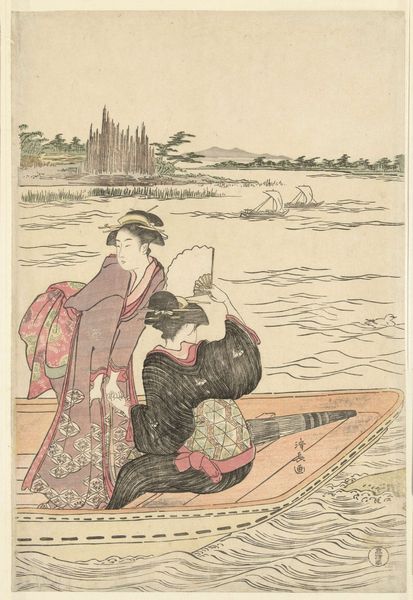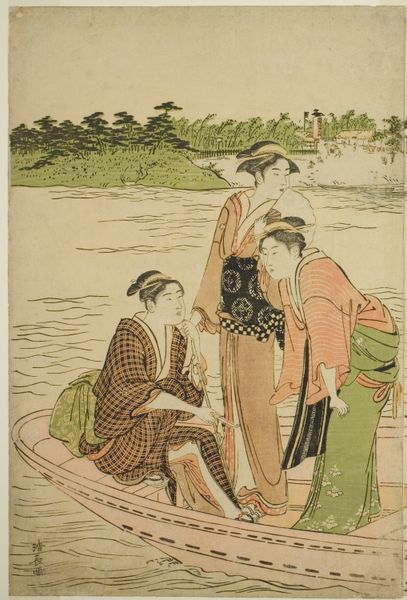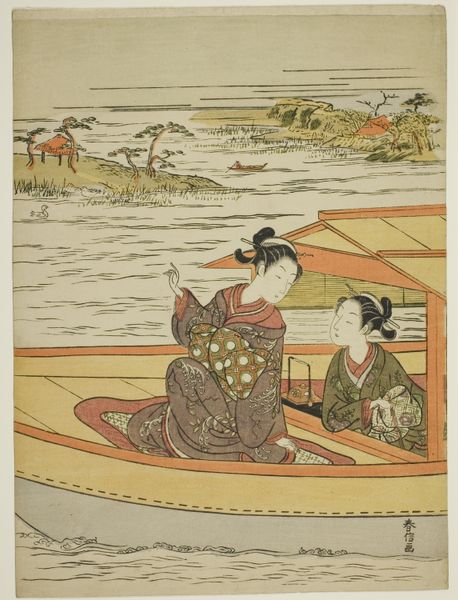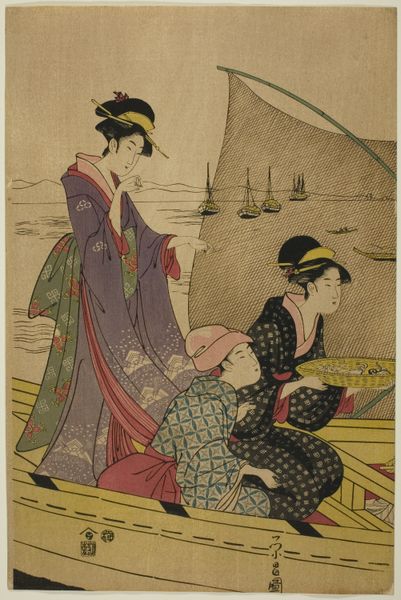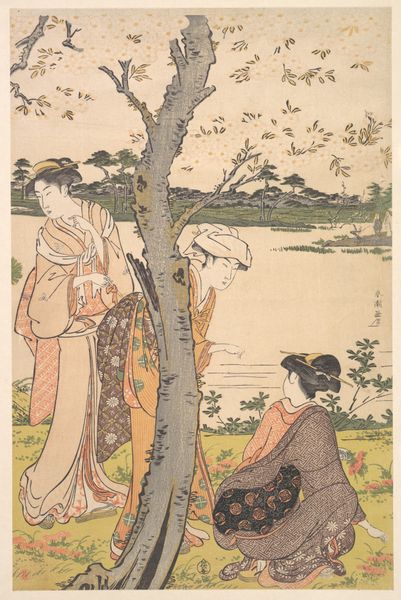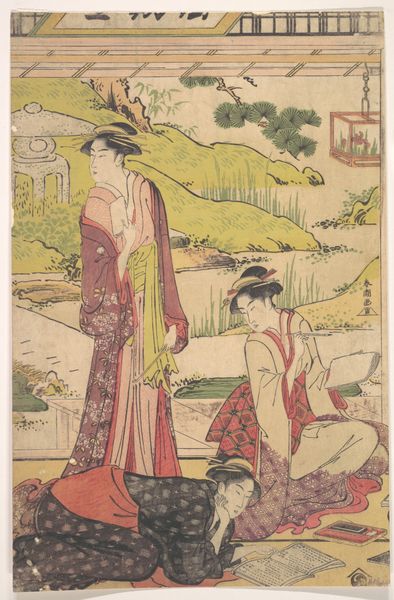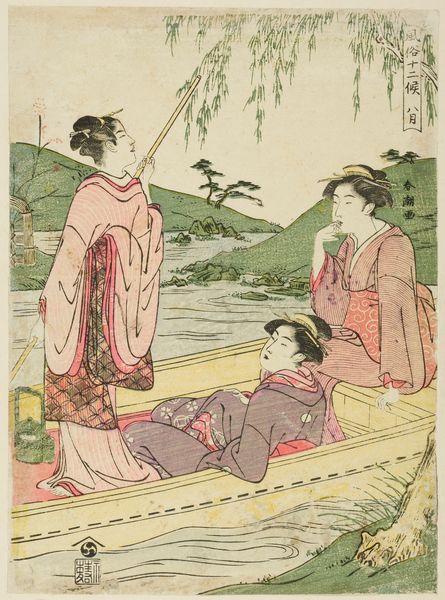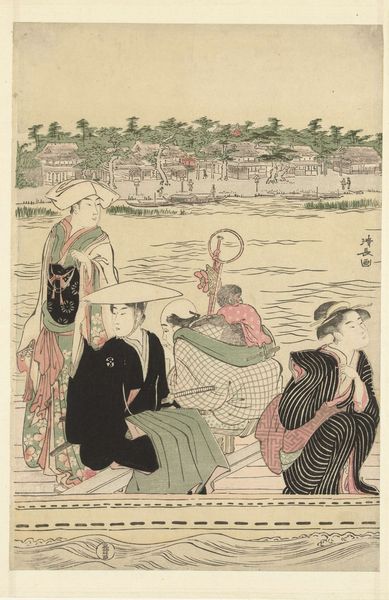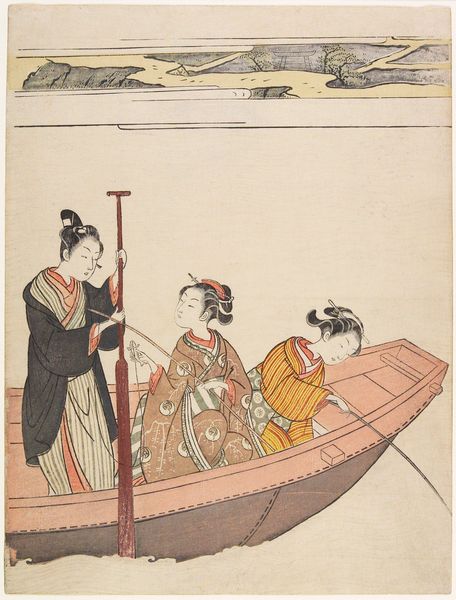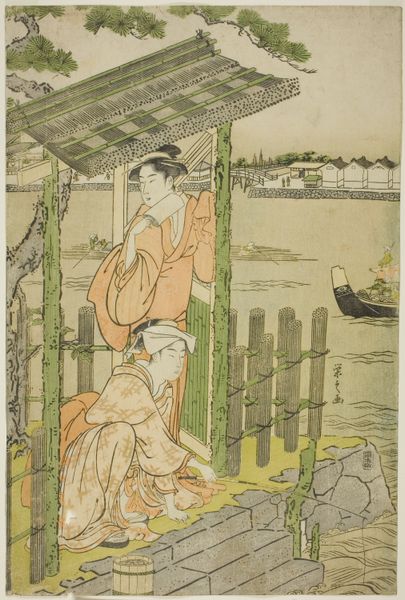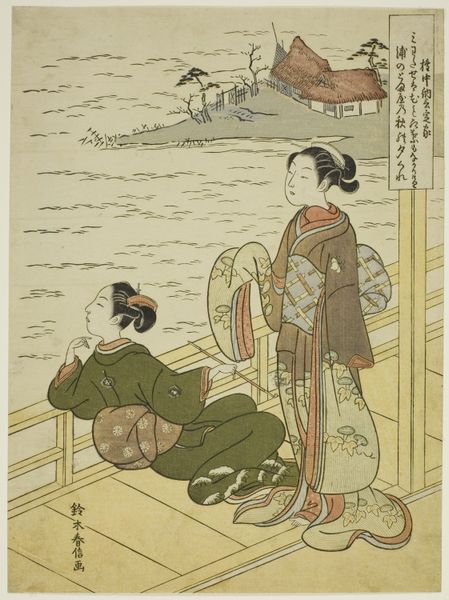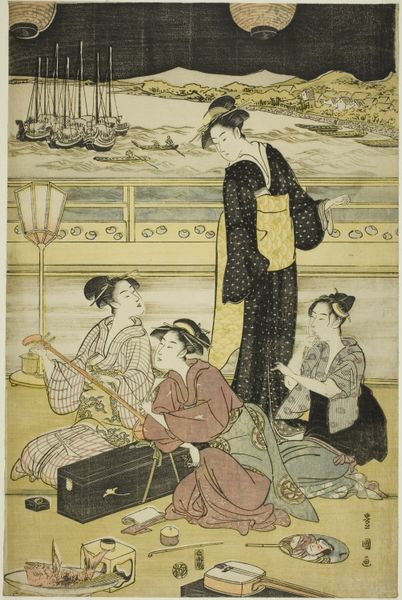
print, watercolor
# print
#
asian-art
#
landscape
#
ukiyo-e
#
figuration
#
watercolor
#
genre-painting
Dimensions: 38.6 × 25.5 cm
Copyright: Public Domain
Curator: What strikes me first about this piece is the almost cinematic breadth of it; we are given the middle of an untold story. Editor: Exactly. Let's delve into this captivating image. This is "A Ferry on the Sumida River," a color woodblock print dating back to around 1787, created by Torii Kiyonaga, and proudly held in the collection of The Art Institute of Chicago. Curator: I love how the vertical composition is subtly bisected into zones. We are drawn immediately to the human forms and then released back to the open and pale skyline. Editor: Indeed, the figures immediately draw the eye, the beautiful courtesans depicted are typical of the Ukiyo-e style, a genre deeply embedded in the urban culture of Edo-period Japan. The prints of this period were widely circulated, functioning as both art and social commentary. Curator: The emotional undercurrent hinges on our perception of what these elegant women signify within their society, perhaps mirroring shifting social values of the time through fashion, leisure, and the commodification of beauty. Editor: And what about the visual weight of this being a print? Because this wasn't a unique art object—it’s the nature of woodblock prints that these were intentionally produced for wider consumption. This is not just about aesthetic beauty but about making art accessible to a burgeoning merchant class. Curator: And, by implication, imbuing it with meaning that resonated across various social echelons through accessible and recognizable codes and iconography. The ferry ride itself symbolizes movement, both literally and figuratively, indicating transitions in life, relationships, or social status. Editor: I see how the river can symbolize this flux of people and commodities in urban settings, as you point out. Kiyonaga cleverly uses perspective and composition to offer not just a picture but a narrative about urban life. Curator: Reflecting upon our discussion, it appears that this image operates beyond surface aesthetics. Editor: Precisely. It's a sophisticated snapshot of its time, mirroring socio-cultural currents that continue to ripple into our present understanding.
Comments
No comments
Be the first to comment and join the conversation on the ultimate creative platform.
